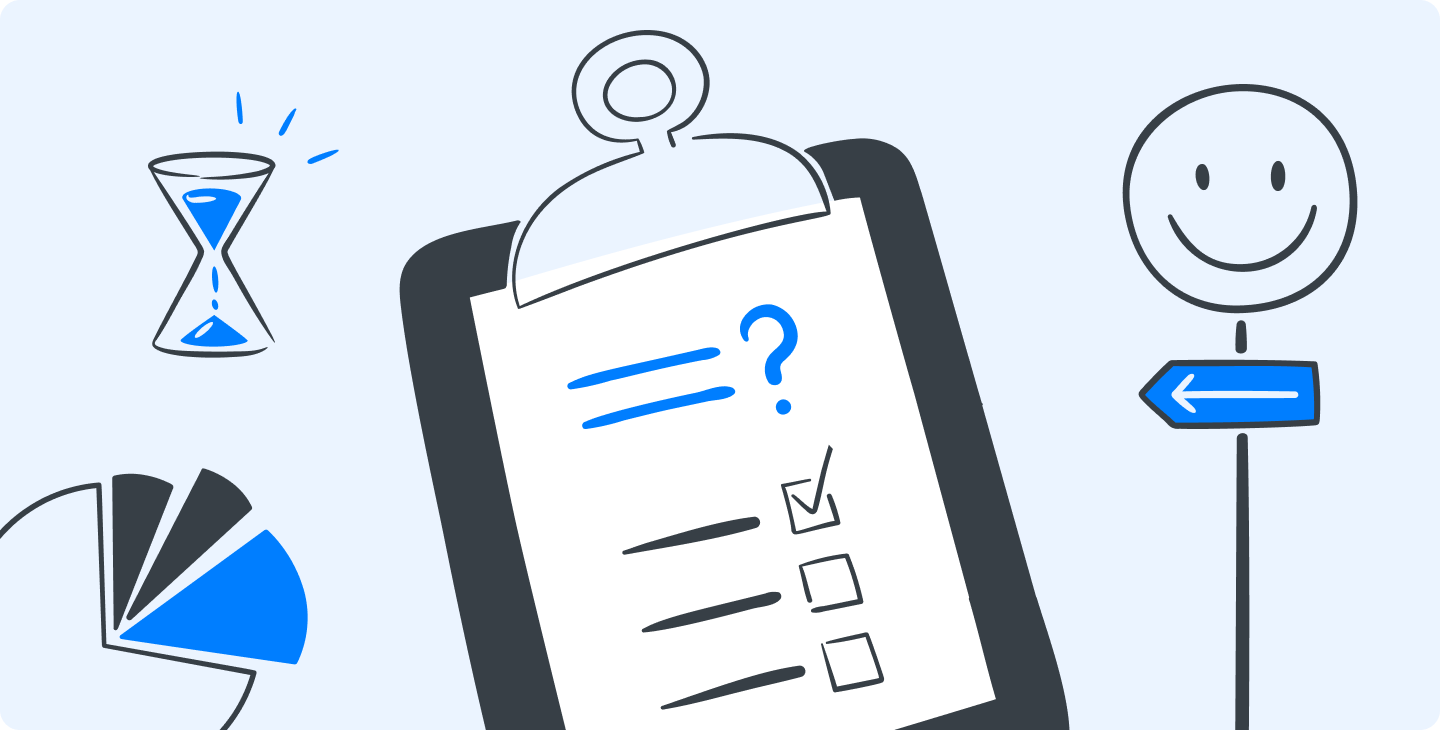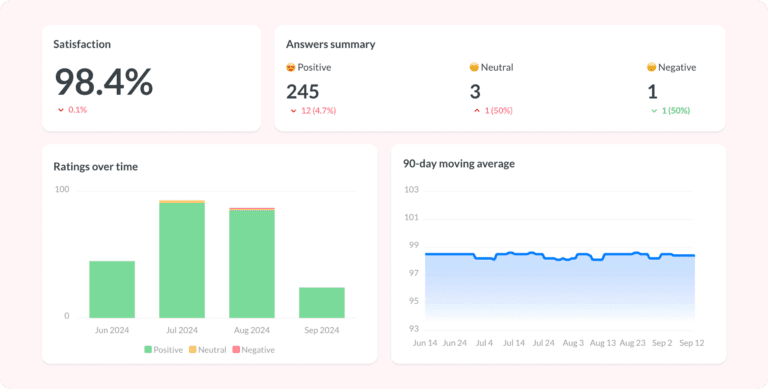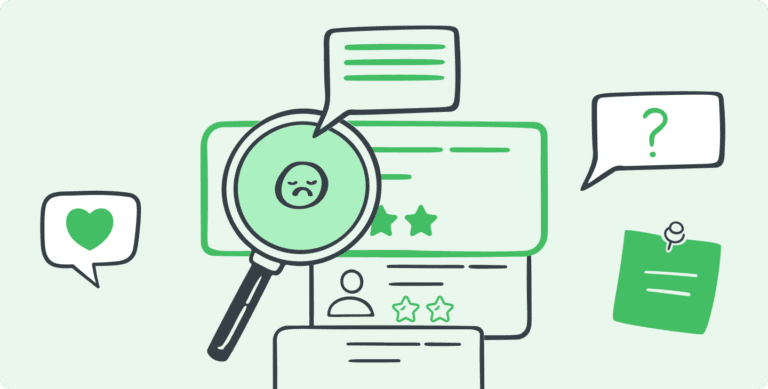What do you think is an appropriate time frame to respond to customer inquiries? 24 hrs? 48hrs? A week?
If you think any of those is an ideal response time, you’re in for a surprise.
41% of consumers expect an email response within 6 hours of sending their request, while only 21% see one business day as an acceptable waiting time. Of customers using an online platform, 71% expect live assistance within 5 minutes of attempted contact. If they don’t receive assistance within their expected time frame, 48% will turn to another company.
The question, then, is how to improve your response times with the resources you have. The best strategies involve collecting your own data and making informed choices about where and how to reduce response times.
Determine Your Responsiveness
One of the first things you need to know is your average first response time: the time it takes for a representative to make initial contact with a customer. For example, if your team frequently fields email inquiries, track how long it takes for you to respond to emails (using only business hours, of course). Establish daily averages, weekly averages, and monthly averages.
Compare your average first response time to benchmark times in your industry, then set goals for your desired first response time. Something you’ll want to keep in mind is how many customers give up while waiting. How long are your customers typically willing to wait on hold or chat? You’ll want your response times to be shorter than their patience.
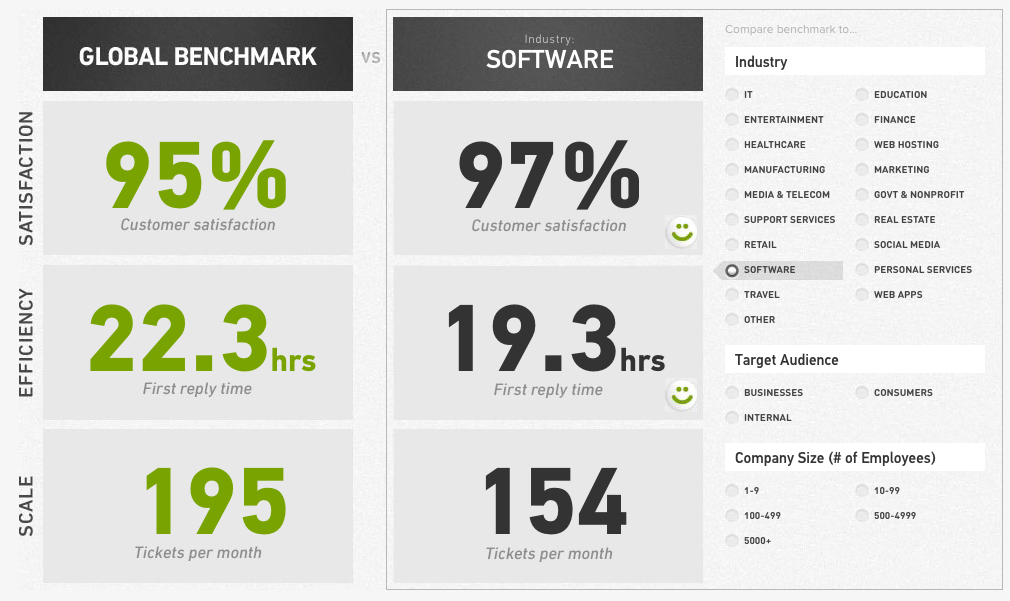
Check out Zendesk’s awesome benchmark data to see how you compare
Having this data allows you to measure the success of the strategies you implement next. In addition, you can track individual responsiveness to identify reps who do a great job vs reps who are struggling. Talk to team members who have great response times. Find out what they do well, and use their observations – along with the strategies below – to coach the members of your team who don’t respond quickly enough.
Build a Strategy from Peak Usage Data
Before you take any steps to boost flagging response times, it’s important to identify when and where your team is most needed.
You should collect enough data to answer the following questions:
- What are your peak hours for inquiries?
- What channels (phone, email, chat, social media) are most popular, and during which hours?
Let’s say you’ve scheduled most of your staff to field support calls between 12 – 1 pm, but are failing to address a spike in calls from 3 – 4 pm. Reprioritizing that hour through some schedule shifts will alleviate pressure on your representatives and result in a lower response time without you having to hire more people.
It’s important to pay attention to the channels used, though.
If most of your team answer phone calls, but your customers prefer opening a chat window, you should pull some team members from calls and put them to work on chat.
By continuously collecting this data, you ensure that you can adjust schedules and channels as necessary to meet the needs of your customers.
Organize Your Support Efforts
A great way to kill the efficacy of your support is to lack an organized system. The time it takes to close out a service ticket is highly dependent upon the right people being able to see it as a priority and act accordingly.
If you and your team suffer from overflowing-inbox syndrome, you may need a new system to organize support cases. Whether that’s just a tool to organize your emails better or leverage support software is up to you, but it’s important that you stay organized to keep cases from falling through the cracks.
For example, a friend of mine has called her newspaper seven weeks in a row because they failed to deliver the Wednesday special. A manager was notified to contact her, but never followed through. As you can imagine, she’s fed up with the service (and vocal about it, too). If their internal communication and follow-through were better maintained, she would have gotten her solution by now.
Manage Expectations with Automatic Replies
If customers contact you with a problem, they’re likely to be upset and nervous about having their issue resolved quickly and fairly. If they have to worry about warranties or return deadlines, they’ll be even more antsy.
So, it’s helpful to give them immediate assurance that their complaint has been received. If they fill out an online form or send an email, send them a confirmation email that their information has been received successfully.
Don’t just send them a ticket number, though – address them by name, provide links to FAQs and other documentation, and give them an estimate of when they’ll hear from you. You may also want to include your operating hours, so they know if they’ll have to wait until the next day for a response.
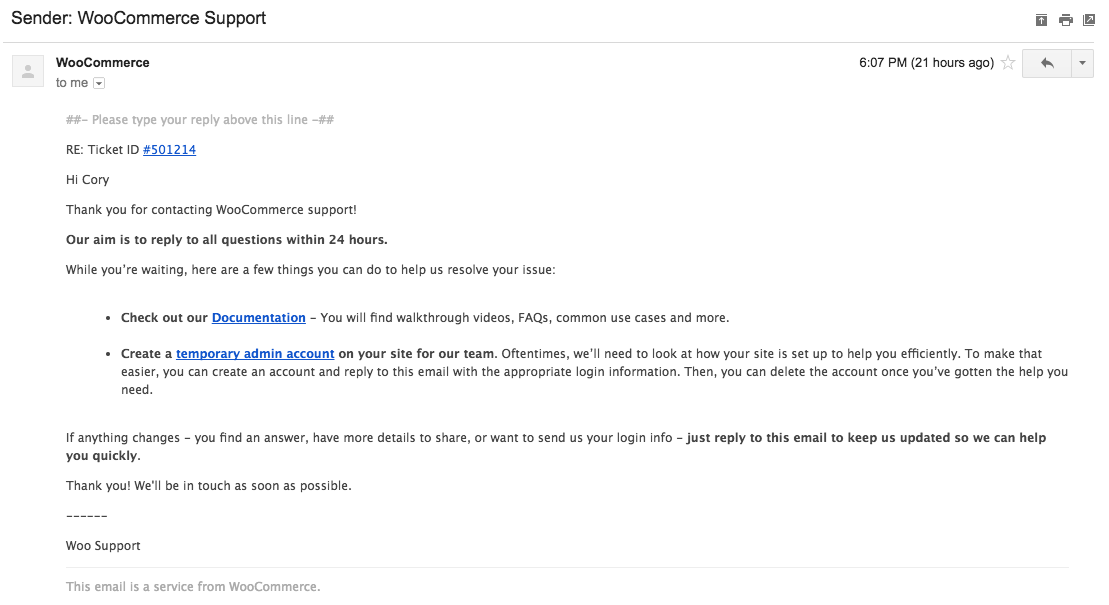
WooCommerce‘s automated email states when you’ll likely hear back, a link to documentation and tip to help their agents troubleshoot a problem quicker for you.
By giving them access to this information, you help set expectations for your response: that you will respond, that your response will be well communicated, and that their concerns will be addressed in a reasonable amount of time.
Guide Customers to the Right Channels
140 characters isn’t much to work with when you’re trying to walk a distraught customer through complex troubleshooting steps. Sometimes, your efforts on social media are best redirected to another channel. For example, you can tweet them your number and ask them to call you for an expedited solution.
Using a channel ill-suited to the problem can eat up your time and reduce your overall responsiveness. If a Twitter conversation needs to be moved to email, or an email conversation would be better resolved over the phone, don’t hesitate to suggest the switch. Most customers will be more than happy to oblige if it solves their problems in less time!
Keep Your Docs Up to Date
Do you know which customer requests take the least amount of time? The ones that never happen, of course!
A well written FAQ page and supporting help documentation can reduce the flood of questions aimed at your team. By keeping track of recurring problems and complaints, you can write help guides and tutorials as needed to bolster your website’s ‘help’ section. Make sure it’s searchable and provide suggestions so that customers can easily find what they need.
In addition, make sure that your support team has access to common issues and solutions that they can implement to help customers. If there is a standard procedure for revising a recently placed order, for example, make sure it’s easy for reps to find the step by step process.
Improving the quality and searchability of help docs is a great way to unburden your team so they can increase their responsiveness.
Mix Personalization with Quality Templates
Many of the help requests you receive via email will look more or less the same. It’s inefficient to compose a fresh response to each one. Using email templates for the overall structure is a great way to eliminate hesitation over how to compose the draft. Providing cut & paste answers to common questions is even better.
But, it’s important that the whole email is not from a cut & paste solution. Customers still value the quality of the response over the quickness of the reply. In fact, a Gallup poll showed that, while speediness resulted in 6x higher customer engagement, empathetic support resulted in 9x higher customer engagement (and subsequent satisfaction).
By combining a cut & paste approach with some personalization around their specific case, you can strike a winning chord with your customers.
Never Lose Sight of Quality
Ultimately, improving your responsiveness is about juggling speed with quality. These techniques provide you methods to speed up your responses without sacrificing the quality of your assistance. It’s never a good idea to cut time by discouraging empathetic, thorough responses.
Instead, a low response time is just one aspect of great customer service. By working to provide reliable service at a reasonable clip, you’re improving the overall experience your customers have, and thereby increasing the likelihood that they’ll keep doing business with you.
